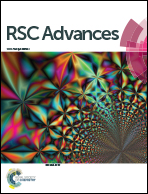Disposal of hexabromocyclododecane (HBCD) by grinding assisted with sodium persulfate
Abstract
Hexabromocyclododecane (HBCD) has been widely used as a flame retardant in polystyrene and textiles, and is ubiquitous in all kinds of environmental media. The sound disposal of HBCD wastes should be made a priority because of their toxicity, bioaccumulation and persistence. Mechanochemical methods for waste disposal have proven to be effective, environmentally friendly and simple in their execution; thus, in this work, one such method was employed to destroy HBCD. Sodium persulfate (PS) was used as a co-milling reagent and the milling balls were made of zirconia. During the experiment, HBCD, PS, and sodium hydroxide (NaOH) were put into a planetary ball mill, wherein the reactions took place. The grounded samples were analyzed via ion chromatography (IC) and liquid chromatography-mass spectrometry (LC-MS). Fourier transform infrared spectroscopy (FTIR), Raman spectroscopy, X-ray powder diffraction (XRD), and thermogravimetry (TG) analyses were employed as assistant measures. Results showed that the degradation and bromine recovery efficiency of HBCD were 95% and 100%, respectively, after 2 h milling. Furthermore, FTIR revealed the breakage of “–C–Br–” and “–C–H–” bonds, and the Raman spectra indicated the generation of amorphous and graphitic carbon. In short, PS–NaOH proved to be an effective co-milling reagent for the treatment of HBCD.



 Please wait while we load your content...
Please wait while we load your content...